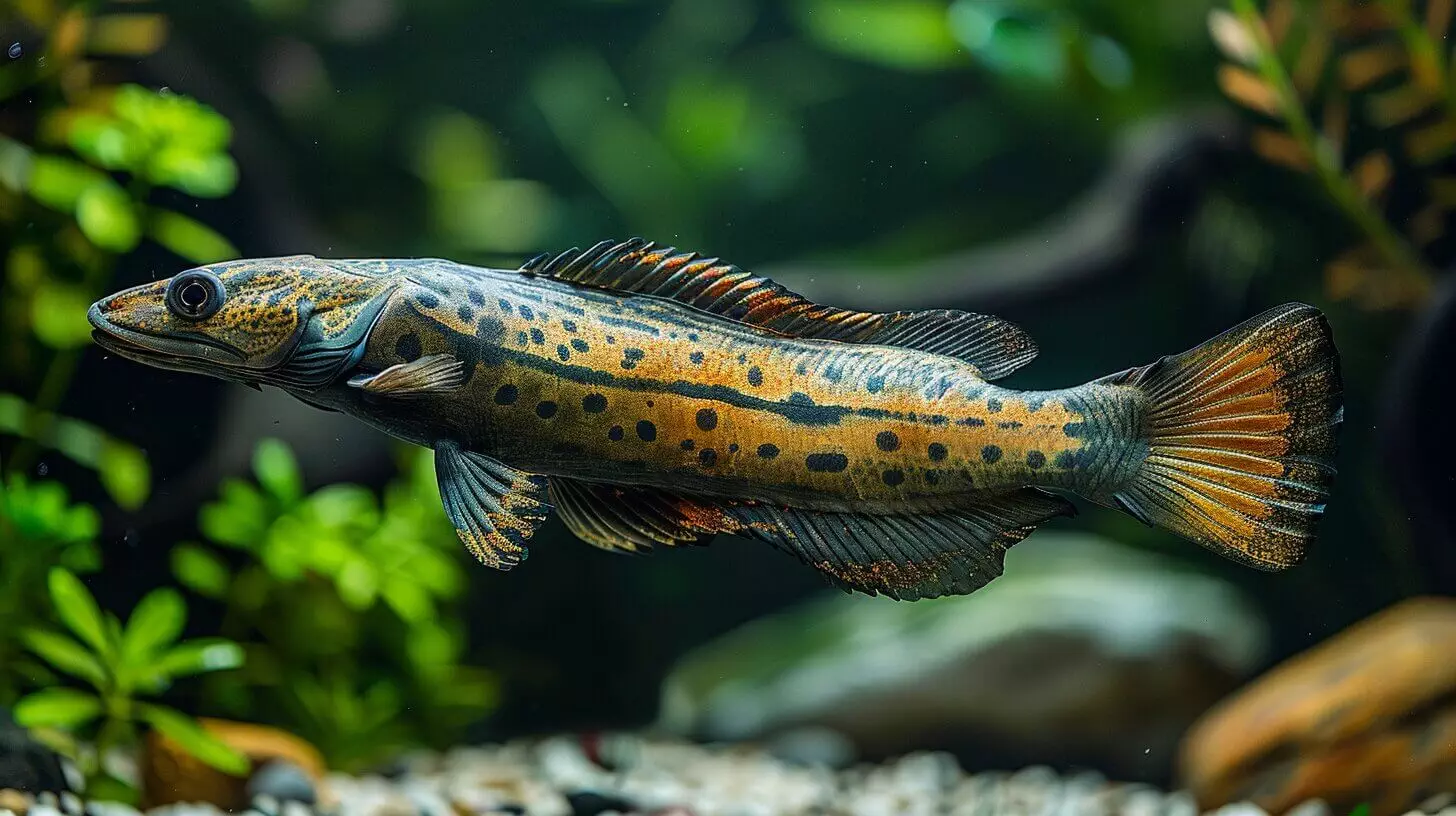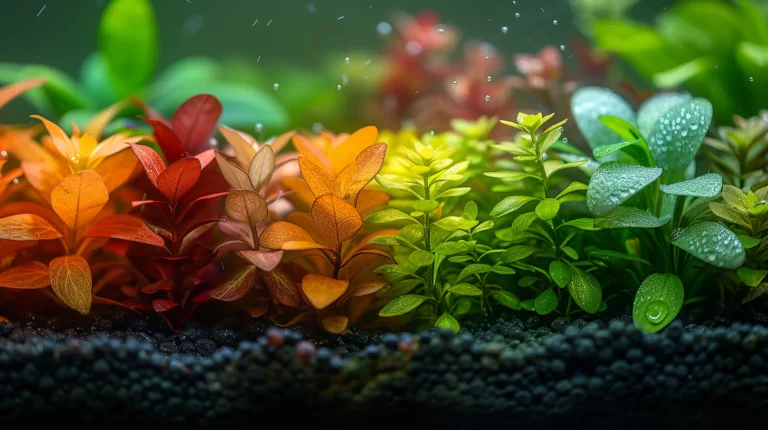When we think about the giants of our aquariums, the Dinosaur Bichir stands out with its impressive size and prehistoric appearance. These remarkable fish, with their elongated bodies and distinctive armored scales, can reach up to 20 inches in length. But what measures are needed to house such a magnificent creature? First and foremost, a spacious tank with a minimum capacity of 75 gallons is essential for a single Dinosaur Bichir. These fish are also known to be escape artists, so a secure, well-fitting lid is a must. Additionally, it’s important to provide plenty of hiding spots and objects to explore in their environment. When cared for properly, the Dinosaur Bichir can live up to 12-15 years, similar to the lifespan of pacman frogs. With the right setup and care, these ancient-looking creatures can make a stunning addition to any aquarium. Ensuring that the tank mates of the Dinosaur Bichir are suitable is important. These fish are relatively peaceful, but they can be aggressive towards smaller tank mates, such as fish and shrimp. It’s also important to consider the compatibility of the Dinosaur Bichir with other aquatic animals, especially if you are considering a turtle and fish cohabitation setup. Proper research and consideration should be given to the specific needs and behaviors of all species involved to ensure a harmonious environment for all inhabitants.
Let’s explore the necessary tank requirements, the best tank mates, and the essential care tips to guarantee our Dinosaur Bichir thrives in captivity. We’ll uncover the secrets to maintaining their health and longevity, making them a standout addition to any aquatic collection.
Key Takeaways
- Dinosaur Bichirs can grow up to 20 inches in length.
- They have a distinctive elongated, serpentine body.
- Known for armored scales and multiple dorsal fins.
- Require tanks of at least 90 gallons for adequate space.
- Lifespan can reach up to 20 years in optimal conditions.
Understanding the Size and Characteristics of Dinosaur Bichir

The Dinosaur Bichir, celebrated for its peculiar elongated body and prehistoric looks, possesses unique physical attributes that distinguish it from other fish species. Aptly deemed ‘living fossils,’ these captivating creatures have armored scales and a set of dorsal fins akin to those of ancient fish, making them a remarkable addition to any aquarium.
Dinosaur Bichirs experience substantial growth from juveniles to adults. Beginning at a modest 3 to 4 inches, they can expand up to 20 inches or more with the correct care, depending on their environment and diet. Their growth rate is moderate, typically reaching full size within a few years.
Physically, Dinosaur Bichirs are notable for their serpentine body, sturdy pectoral fins, and a unique ability to breathe atmospheric air, thanks to specialized lungs. These traits contribute to their prehistoric charm and make them a standout in any aquatic setup.
Moreover, with proper care, a Dinosaur Bichir can live up to 20 years, making them long-term companions for those ready for the commitment. Their resilience and ancient allure make them perfect for aquarists who value freedom and adventure.
Creating the Ideal Bichir Tank for Your Dinosaur Bichir

When crafting the ideal tank for your Dinosaur Bichir, it’s crucial to consider their spatial requirements and environmental preferences. These majestic beings thrive in well-designed habitats.
Tank size is the starting point. These magnificent creatures need ample room for exploration and growth. A tank of at least 90 gallons is recommended. This ensures they have sufficient space to stretch and explore.
Water quality and temperature are also vital. Maintaining pristine water conditions is key to your bichir’s health. Regular water changes and a reliable filtration system keep the environment optimal. The water temperature should range between 75-82°F to mimic their natural habitat.
Here are a few key elements to create a truly enriching environment:
- Hiding Spots: Rocks, driftwood, and plants provide shelter and reduce stress.
- Substrate: A soft, sandy substrate is preferred to protect their delicate underbellies.
- Open Spaces: Ensure a vast open swimming area for free movement.
Choosing the Best Tank Mates for Your Dinosaur Bichir

Selecting the ideal tank mates for our Dinosaur Bichir requires careful consideration due to their size and temperament. Considering these creatures can grow quite large, we must select compatible species that won’t become prey or exhibit aggression.
Given the Dinosaur Bichir’s size, smaller fish aren’t advisable—they’ll likely end up as lunch! Instead, opt for robust and similarly-sized species. Oscar fish, large catfish, and other bichirs can be compatible species, given their similar size and temperament.
Avoid aggressive species that might pick on our peaceful Dinosaur Bichir. Also, consider the tank’s layout to provide hiding spots and territories for all inhabitants. Remember, a balanced tank environment is essential for the well-being of our aquatic friends.
Essential Bichir Care Tips for Keeping Dinosaur Bichir

Caring for Dinosaur Bichirs involves understanding their unique needs and behaviors. They are known for their carnivorous diet and predatory instincts, so it’s important to cater to these traits when setting up their habitat.
To keep a Dinosaur Bichir healthy and happy, consider these essential care tips:
- Diet: Feed them a variety of protein-rich foods like shrimp, fish fillets, and specialized pellets.
- Tank Setup: Make sure the tank has plenty of hiding spots at the bottom where Bichirs spend a lot of time.
- Health Monitoring: Regularly check for common health issues like parasitic infections and skin conditions.
Also, Dinosaur Bichirs undergo a shedding and regeneration process. So, don’t be alarmed if you notice them shedding skin; it’s a natural part of their growth.
Breeding Dinosaur Bichir: A Natural Process

Understanding the breeding behavior of Dinosaur Bichir is essential. Males display vibrant colors and engage in courtship dances to attract females. Once the female lays eggs, the hatching process takes around three to five days. At this stage, post-breeding care becomes crucial.
The adult Bichirs should be moved to a separate tank to prevent them from eating the eggs or juvenile bichirs. It’s crucial to closely monitor the growth of these juveniles, as their early development sets the stage for their future size and health.
Breeding Dinosaur Bichirs can be a rewarding endeavor that brings us closer to understanding these ancient fish and their natural behaviors.
What is the Size Comparison Between Dinosaur Bichir and Alligator Gar?
The size comparison between the dinosaur bichir and alligator gar versus gar is significant. The alligator gar is larger, reaching lengths of up to 10 feet and weighing over 300 pounds. In contrast, the dinosaur bichir only grows to about 18 inches. The alligator gar is a formidable predator in its habitat.
Conclusion
To sum up, we’ve delved into the captivating world of the Dinosaur Bichir, from its impressive size and unique characteristics to the essentials of creating an ideal habitat and choosing compatible tank mates.
By following our care tips and understanding their natural behaviors, we can guarantee these prehistoric giants thrive in our aquariums.
Let’s embrace the challenge and reward of keeping Dinosaur Bichirs, making our tanks a true showcase of aquatic history.
Frequently Asked Questions
What is a bichir fish?
Bichir fish, also known as dinosaur bichirs, are freshwater fish known for their unique appearance and behavior.
How big can bichir fish grow?
Bichir fish can grow to be quite large, with some species reaching over a foot in length.
Where in the aquarium do bichir fish prefer to stay?
Bichir fish are bottom-dwellers and usually prefer to stay at the bottom of the tank.
How do bichir fish get their oxygen?
Bichir fish can get their oxygen from the surface of the water due to a special organ that allows them to breathe air.
Are bichir fish considered predatory and aggressive?
Yes, bichir fish are carnivorous and can be aggressive towards smaller tank mates. It’s important to choose tank mates carefully.





